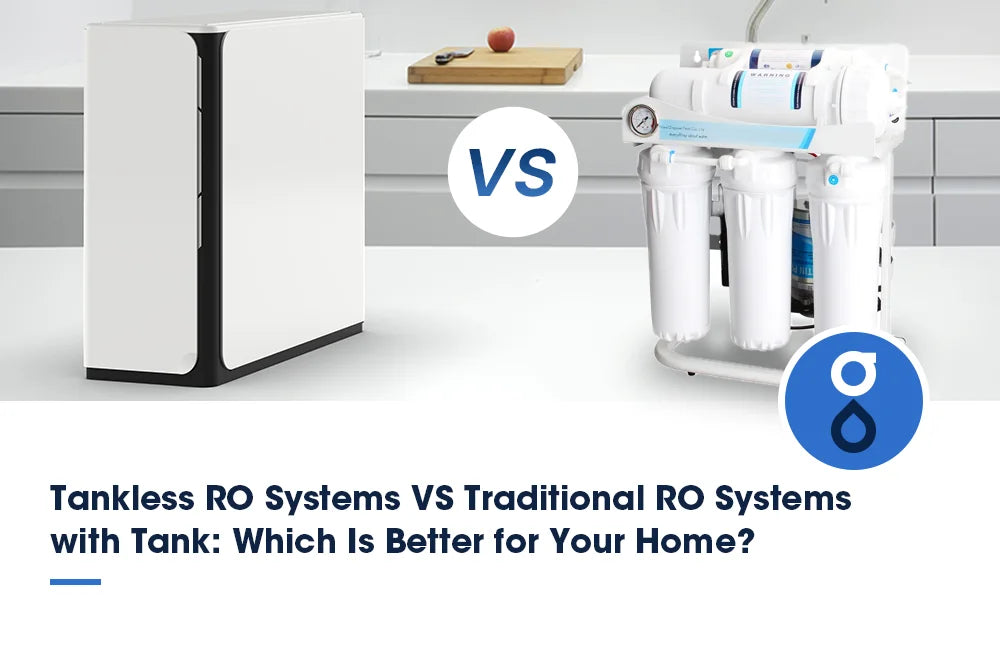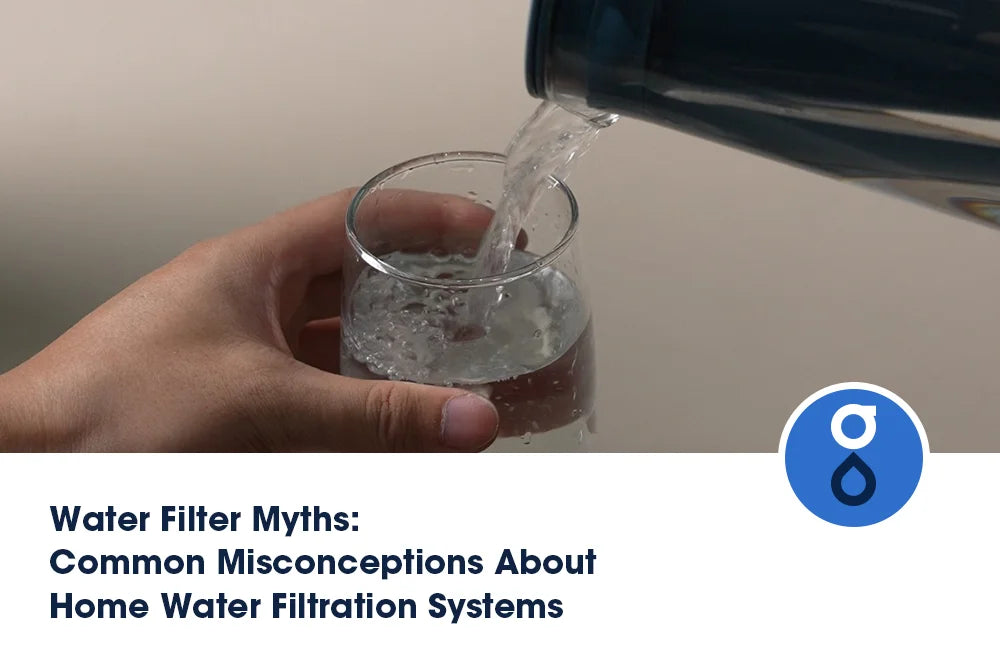Table of Contents:
The overview of reverse osmosis systems
Pros and cons of traditional reverse osmosis systems with tank
Pros and cons of tankless reverse osmosis systems
Key differences between tankless and traditional reverse osmosis systems
Factors to consider when choosing an reverse osmosis system
FAQs
Conclusion
When choosing a water purification system for your home, you're likely to face a crucial decision: should you opt for a tankless reverse osmosis system or a traditional one with a tank? Each has its merits, with tankless models offering space-saving designs and energy efficiency, while traditional units promise superior filtration and robustness. However, they also present unique drawbacks that might tip the scales. What is the best option for your specific needs? Let's weigh the pros and cons together to find the optimal solution.
The overview of reverse osmosis systems
Under sink reverse osmosis system, or RO, is a technology that utilizes a semi-permeable membrane to remove larger particles from drinking water. It's one of the most effective filtration technologies available today. Water is forced under pressure through a membrane, trapping contaminants on one side and allowing the clean water to pass to the other.
This process can remove a wide range of contaminants, including lead, chlorine, fluoride, nitrates, and more. It's no wonder that RO systems are popular among homeowners who are serious about their home water quality.
Yet, not all RO systems are created equal. There are traditional RO systems with tanks and tankless ones, each with pros and cons. But that's a topic for another time. For now, know that an RO system can be a real game-changer in ensuring you can access clean, safe water at home.
Pros and cons of traditional reverse osmosis systems with tank

Traditional reverse osmosis systems with a storage tank are popular but have unique strengths and weaknesses. One major strength is their ability to store purified water, ensuring you always have clean water on tap. This makes them ideal for large households or those with high water usage.
However, they're not without their drawbacks. Installation challenges can arise due to their size and the need for a dedicated space to accommodate the tank. You might need professional help to install these systems, adding to the initial cost.
Regarding cost considerations, traditional RO systems with tanks can be more affordable upfront than their tankless counterparts, but ongoing maintenance requirements may offset this advantage.
Maintenance is necessary to keep these systems running efficiently. Filters need regular replacement, and the tank requires periodic cleaning to prevent bacteria buildup. These maintenance routines can add up, both in terms of time and money.
In essence, while traditional RO systems with tanks offer the convenience of immediate access to purified water, installation challenges, maintenance requirements, and cost considerations could overshadow these benefits.
Pros and cons of tankless reverse osmosis systems
Switching gears to tankless reverse osmosis systems offers certain advantages over traditional reverse osmosis systems. Firstly, the installation process is typically easier and less time-consuming. Since there's no tank, you don't need to worry about finding an adequately sized storage space.
Maintenance requirements are also less demanding. Without a tank to clean and monitor, your ongoing maintenance tasks are significantly reduced. This means you can enjoy pure, filtered water with less hassle.
However, it's not all sunshine and rainbows. One potential downside is the initial cost. Tankless reverse osmosis systems tend to be pricier upfront than their traditional counterparts. Yet, this might be offset over time through lower maintenance costs and increased lifespan.
Importantly, tankless RO systems are renowned for their water efficiency. Traditional systems can waste a significant amount of water. In contrast, tankless models have advanced features to reduce water waste, making them a more environmentally friendly choice.
Despite these pros and cons, the best Glacier Fresh Reverse Osmosis system for your home depends on your needs and circumstances. Evaluate them carefully before making a decision. After all, clean, safe water is crucial for your family's health and well-being.
Key differences between tankless and traditional RO systems
The first key difference is the filtration efficiency. Tankless reverse osmosis systems are more efficient as they don't have a recovery tank where water can stagnate. This means fresher, purer water for you. Traditional reverse osmosis systems, on the other hand, can lose some of their efficiency due to the storage tank.
Second is the installation requirements. Tankless reverse osmosis systems are compact and can be installed almost anywhere, making them perfect for smaller homes. Traditional systems with tanks need more space, which can be a challenge in tighter areas.
Lastly, consider the maintenance needs. Tankless systems boast of fewer parts, which translates to less maintenance. Traditional systems, however, require regular tank cleaning and component replacement. Let's summarize these points in a table:

Factors to consider when choosing an reverse osmosis system

When you're in the market for a new reverse osmosis system, you'll need to consider several factors.
The first is system efficiency. Both tankless and traditional systems have strengths, but you'll want to consider how much water you use daily and how quickly you need it purified. If you have a large family, a system with high efficiency keeps up with demand.
Secondly, consider water waste. Traditional systems often use more water than they purify, which could be better in areas with water scarcity. On the other hand, tankless systems tend to be more water-efficient, meaning less waste.
Next, consider maintenance costs. Over time, filters and membranes will need replacement. Tankless systems often have fewer parts that require maintenance, which can save you money in the long run. However, the upfront cost can be higher than for traditional systems.
Lastly, the size of the system matters. Traditional systems with tanks require more space, so if you're short on room, a compact tankless system might be your best bet. Always carefully examine your needs, constraints, and budget before deciding.
FAQs
Is the water quality different between tankless and traditional RO systems?
No. Both systems use reverse osmosis membranes and provide similar purification levels. The difference lies in delivery speed, storage, and design.
Can a tankless RO system work with low water pressure?
Most tankless RO systems require consistent pressure (above 40–60 psi). If your home has low pressure, you may need a booster pump — or opt for a traditional model with a tank.
Are tankless RO systems noisy?
High-end models like the Glacier Fresh U01 operate quietly thanks to advanced pumps and sound insulation.
Conclusion
Choosing between a tankless and traditional reverse osmosis system depends on your needs. If space and efficiency are your top priorities, go for a tankless system. But remember, they may require more maintenance. On the other hand, if you value high filtration and don't mind the larger size, a traditional system could be your best bet. Visit Glacier Fresh and consider your priorities to make a choice that's best for your home.


















